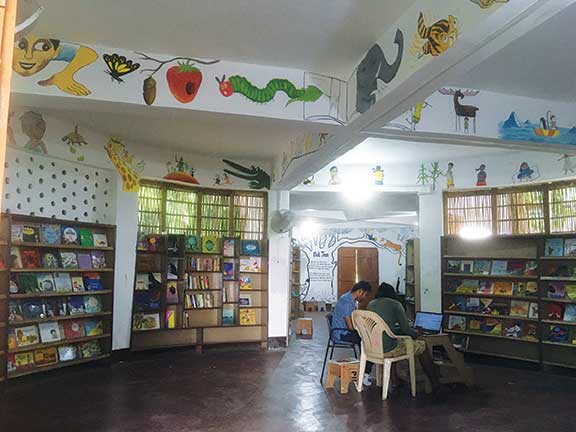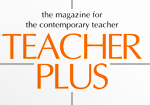Sreya Rakshit
Why should we bring ‘Literature’ into language learning spaces?
The essence of a language classroom lies in letting the learners think, wonder, imagine, opine, reason, argue, and reflect on multiple topics that they might find relevant. Since language is a medium of expression, the language learning space must provide an opportunity to learners to mull over their thoughts and ideas on various subjects. In my experience, bringing in a powerful literary text that opens up a world of possibilities can create such opportunities. It not only allows room for discussion on otherwise abstract subjects like love, anger, justice, hope, freedom but also helps in examining one’s opinions and reasons for believing in well-established social norms. All this may help in developing self-awareness about one’s own feelings and emotions.
I teach language to middle school children in rural Assam in an English medium school. The children mostly belong to the Mising community and are first generation school goers with limited access to print and text in their home environments. So, as a language educator, I strive to bring in diverse texts for different readers and place it within their reach in classroom libraries. It gives students an opportunity to interact with texts on a regular basis and find their own moment to pick the one to engage with. At the same time, I try choosing ‘relevant’, ‘contextual’ texts for classroom engagement. One such text which opened up a world of possibilities for the seventh grade children was Dear Mrs. Naidu authored by Mathangi Subramanian, published by Young Zubaan in 2015.

Why is Dear Mrs. Naidu an enriching text?
The wonder of the text lies in the author’s lucidity of language, the use of vivid imagery and powerful metaphors that beautifully weave into a fabric that emanates warmth and solidarity. Mathangi slowly invites the reader to engage with ideas of inequality, discrimination, gender norms, democracy, rights, justice, integrity, emotions, friendship, without any sense of discomfort. The protagonist Sarojini, who is a sixth grade student in a government school, raises a lot of important questions that were relevant for the age-group with whom I was reading this book. For them, Sarojini gave voice to their concerns, emotions and feelings. They felt deeply connected with the protagonist’s dilemmas and challenges; the way she tries to navigate through the complex mesh of expectations that her mother places on her and the ones she begins to have of herself.
Sarojini is a young girl who lives in an urban slum with her ‘Amma’. She gets acquainted with her namesake ‘Sarojini Naidu’, renowned poet, freedom fighter and political thinker, whose autobiography opens up a world of ideas and notions for her. Young Sarojini compares the different situations in her life to the episodes she reads about in Mrs. Naidu’s life and draws inspiration to face the challenges she’s confronted with. The novel starts out with Sarojini expressing how her friendship with her best friend Amir, had grown distant after he moved to a private school and began living in a posh neighbourhood. Sarojini’s journey begins with her wanting to study in the same school as Amir so that their friendship can be rekindled. She encounters various characters who help her evolve as a person and she decides to make her government school compliant with the Right to Education (RTE) Act of inclusion, instead of studying in a private school. In Sarojini’s journey of self-discovery, she becomes more aware of the true meaning of friendship, of social inequalities, of the biases that people hold against each other, of rights and finding the courage to speak the truth.
What was our takeaway?
Building perspectives
The book provides opportunities to look at a situation from different perspectives. This is a recurrent aspect of the text. There are situations where Sarojini and Amir, or Sarojini and her Amma have different positions based on where they are located. This allowed the students to understand situations from different points of view both within the text and in conversations in the classroom. To illustrate briefly, I will share a couple of examples.
One such situation was when Sarojini assumed that Amir had drawn a line in their friendship after going to the new private school owing to the sudden change in his social class while Amir actually struggled to make new friends as he was a former slum-dweller.
Here is another such example with a student’s response to it.
Sarojini’s teacher in the book, Annie Miss, who was supportive of working towards making the school compliant with RTE once said, “Even if we don’t fix our school, it would be a valuable experience.” In this situation Sarojini presents an alternative viewpoint. She felt that not fixing the school was not an option as her hope for a better future which could alter her life and the lives of many children like her, was pinned on the betterment of the school. I asked the children to reflect on why Annie Miss and Sarojini differed in their perspectives.

Manik’s response: “I think there was a difference in their perspective because of the inequality in society. Annie Miss was privileged, so she doesn’t face all the problems that Sarojini faces. Sarojini was not privileged so she wanted to change her life through education. They were also coming from different backgrounds. So they have different life experiences.”
Reflecting upon complex emotions and dense subjects
As I previously mentioned, the ‘text’ offers a window and a mirror to think about ‘complex emotions and ‘dense subjects’. One such riveting discussion on ‘anger’ happened when Sarojini’s character was ‘angry’ with her mother who would not understand the intent behind her actions. We tried to make sense of why one feels angry, how they feel anger within their body, how they want to express it, whether it is a ‘wrong’ emotion to feel or whether it’s just like any other emotion. Initially, many of the students felt that it is wrong to feel angry but through our classroom discussions, an understanding evolved. We analyzed Sarojini’s reasons for being angry and the children also reflected on situations when they had felt anger and mostly it was when they felt helpless in a situation they cared a lot about. I had asked them to reflect on whether they thought Sarojini’s anger was justified and whether they had been in a situation where they had been furious with an elder.
Rashmi’s response: “I really appreciate that Sarojini’s anger was justified because her mother was stopping her from doing the right thing. She was trying to change something in their society. I think her mother was also right. She may be in trouble after some days. But I support Sarojini more because she has the courage to do what is right. Even though their plan may not succeed, at least she was trying to do the right thing.
“I was angry with an adult of our village because I believed she was wrong. She hurtfully told me to learn weaving because I am a girl. She said it is the main task of our girls which we should know is compulsory. I did not say anything but I will prove to her that weaving is not a girl’s compulsory and main task.”
Understanding one’s rights and the essence of democracy can be abstract and dense for the learners but the text weaves into the plot such themes with ease and helps children think about it. When Annie miss explains the section in RTE about the 25 per cent reservation in private schools, Dipti, a young, powerful character raises an important question – instead of reserving 25 per cent of the seats for children from economically weaker sections, why doesn’t the government make the public schools better. This moment becomes a turning point where Sarojini begins to reflect on her rights. It helped us unpack some of the ideas around why it’s important to have a welfare state. I asked the students to think about what could make the government schools better.
Komal’s response: “The government schools can be better if they give opportunities to students for sports, art and so on. Build libraries in the school. Give students the freedom to ask questions to the teachers. Train the teachers properly. Make the school like homes where people feel comfortable.”
Mentoring and enhancing their expressions
Being able to articulate one’s thoughts clearly in written form is often a challenge faced by students learning a new language. Expressing oneself in a language one is not comfortable in can be daunting and also a dreaded activity in itself. However, if we can create some relevant context and allow students a certain amount of freedom to express themselves about things that genuinely move them or interest them, they might feel more inclined to engage with the task. As Sarojini pours her heart out in the form of letters she freely shares about her life, her friends, her struggles and opinions on varied subjects. It becomes, yet again a starting point for the learners to think about their own experiences and write about them. As part of post read-aloud activity, the students wrote on many themes for which the ‘text’ sets a context like ‘where they were from, who was the most important person in their life, when was the time they had made a new friend’ and so on. The text mentored the way they would articulate themselves as it suggested new ways of thinking about their experiences.
The text had an immense effect on their articulation and use of language itself. The author brings out emotions and elevates one’s ordinary experiences with the use of powerful metaphors. The use of metaphors had a lasting impression on them as they used similar expressions while articulating their thoughts. For example, to express a friendship that has grown distant, a learner borrowed the expression ‘frayed friendship like a worn-out shirt’. In a particular situation, the author compares the ‘strength of the women in the community to the slender leaves of a coconut tree that may look fragile and may bend in the storm but won’t break easily’. The children were able to immediately connect to the women in their lives and were awed by the use of such symbolic representation. They would also try to use metaphors of their own while expressing themselves.
Developing a sense of agency
Most importantly, reading this text gave the students a sense of agency – that even as young adults, they are not powerless. They could question adults in positions of power and they could decide for themselves what the ‘right’ action was in a particular situation. To understand that one has agency to change a situation is an empowering realization. Some of the children who were engaging with the book stepped up and held spaces with the larger student community on how to improve the school assembly. They took charge of their problem, conducted meetings and came up with structures to improve student participation on their own. Some of them took it upon themselves to address the lack of cooperation among boys and girls and actively sought ways to have genuine interactions between themselves. The children who led this faced a lot of resistance from their peers but they didn’t give up and kept engaging with the issues.

Challenges of reading aloud a novel
Picking up a 250+ pages novel as a ‘read aloud text’ to engage with doesn’t come without its challenges, one being the time-span over which such an engagement might take place and keeping the audience interested in the novel. Our engagement with the text was punctuated with ‘COVID – breaks’, ‘flood holidays’ and ‘annual examinations’. However, we persevered through it – resuming the text each time with a session of recapitulation and making sure everyone was on the same page. Having a definite plan that children are also aware of might help. Another challenge that might arise is deciding how much time in a week one might devote to ‘read-aloud’ and achieving a fine balance to engage with other aspects of language learning. Since I had an hour – long session, our read-aloud would be interactive, where we would pause in-between the text to have discussions. We would work on comprehension, vocabulary and writing centred around the text. Even though there are challenges that one has to embrace, I feel such texts must be engaged alongside their prescribed school texts as there is no replacement for a powerful novel and the genuine interest it fosters among students.
Conclusion
The eagerness with which my entire class would await the read-aloud sessions has strengthened my belief that bringing a powerful piece of literature will lead to more meaningful engagement with the language itself. About six months later, I had asked the students to share what they liked most about Dear Mrs. Naidu and the reflective thoughts they poured out bear witness to the long-term impact a powerful text can have on children.
“It was the friendship between characters; it has impacted my life in a positive way, I have understood that the outer part doesn’t matter, understanding each other’s feelings, trust and how we feel with them is more important in a friendship,” shared a student. A few students reminisced that the use of vivid imagery in the author’s style is what stayed with them, for example, comparing restless Dipti with mynah birds, ginger-chai tasting like friendship, comparing friendship to the waning and waxing of moon among many others. Lastly, a few shared that it helped them understand the concepts in political science better, like discrimination, equality, rights, democracy, law and gave them a lens to observe it playing out in society.
The author is interested in the areas of language, literacy and literature. She is a language educator with the Hummingbird School, Majuli, Assam. She can be reached at sreya.rakshit@gmail.com.
